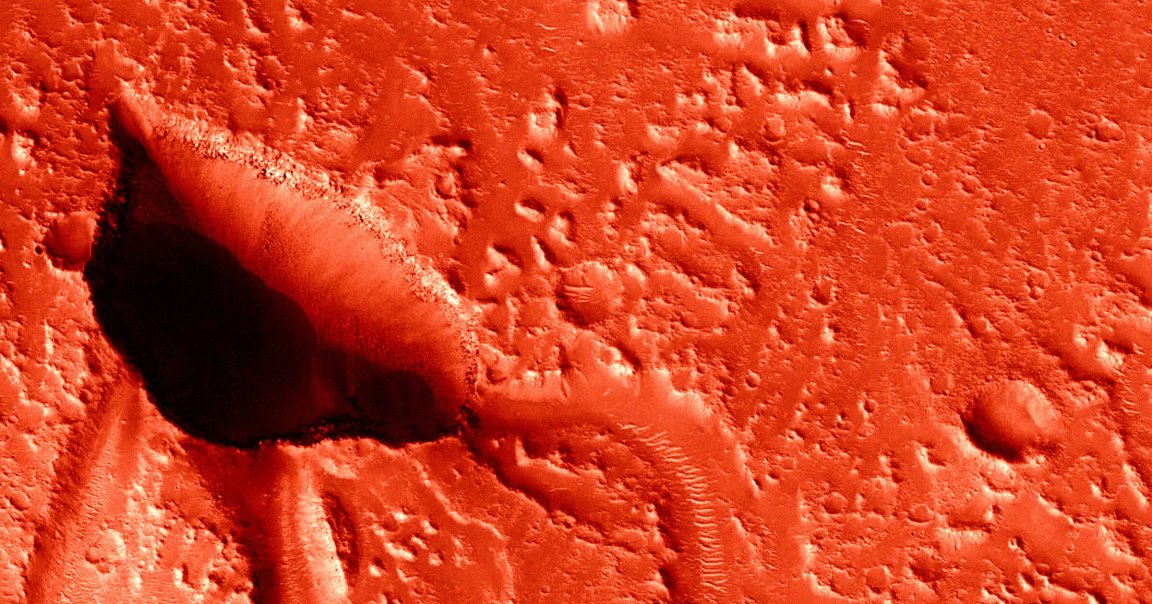
Scientists have long been interested in the caves of Mars — not just because they could provide a home for future human explorers, but also because they just might harbor evidence of life on the Red Planet, much like how caves on Earth are home to a staggering variety of organisms.
Now a team of scientists, led by Shenzhen University in China, have found eight caves on Mars with an accumulation of evidence that water may have carved them into existence. And where there was water, they say, there could be signs life — either ancient, or just possibly contemporary.
They detailed their findings in a new study published in The Astrophysical Journal Letters, where they also concluded that the caves are a “compelling candidate for future robotic and human missions” because they are sheltered from the deadly Martian cold, raging wind storms and extreme radiation.
The scientists came to their conclusion after noticing that certain features in Mar’s Hebrus Valles, a region characterized by valleys and rocky terrain, exhibit “geomorphological indicators of past aqueous activity.”
The scientists also became interested in the area because it has sinkholes, which are depressions in the landscape where surface soil or rock has collapsed. But while sinkholes on Mars are typically caused by volcanic activity, water may have formed several of these holes in the Hebrus Valley and created karstic-like caves, which on Earth are caverns formed by water and sculpted from water-soluble rocks such as limestone.
For their analysis, the scientists studied data from mineralogical maps created by two NASA spacecraft orbiting the Red Planet: the Mars Global Surveyor and Mars Odyssey, which is tasked with analyzing and identifying chemicals on the Martian surface.
From their analysis, they found water-soluble substrates and sulfates at the sinkhole sites they identified as being possibly carved by water, and also picked up concentrations of hydrogen at these places, another piece of evidence that water was present.
They also created 3D models of these sinkholes using satellite imagery, with their shape strongly suggesting that water caused these sinkholes to appear, carving underground caverns in the process.
“These skylights are interpreted as the first known potential karstic caves on Mars, representing collapse entrances formed through the dissolution of water-soluble lithologies — defining a new cave-forming class distinct from all previously reported volcanic and tectonic skylights,” the scientists wrote.
The evidence is tantalizing. What if there really is life there, whether long dead or dormant?
There is only one way to find out in a definitive matter, the scientists said. Send a mission to explore these caves — and see what’s inside.
More on Mars: Scientists Investigate Evidence of “Burrowing” Under Surface of Mars